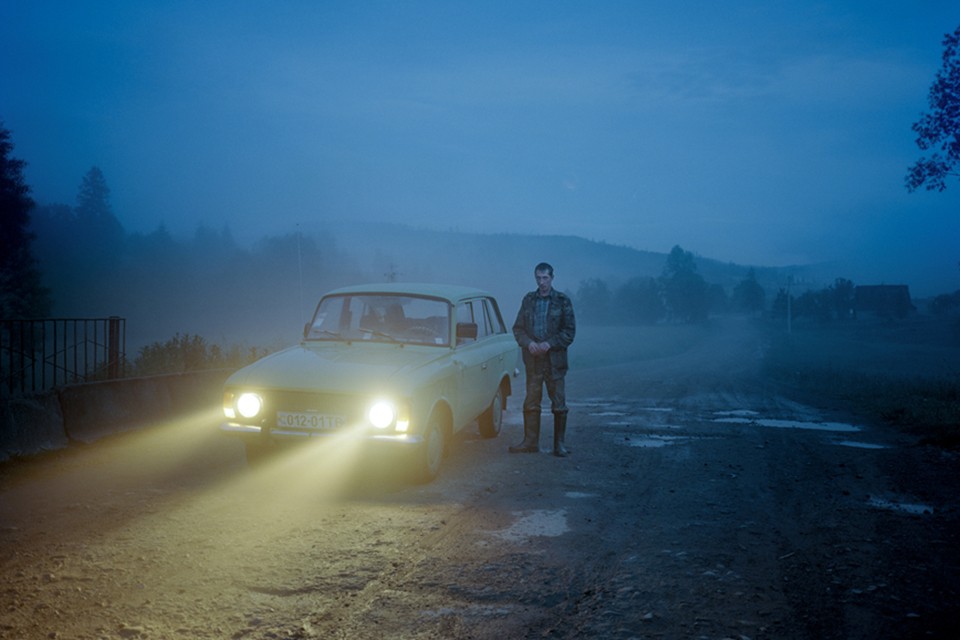
The Eastern Bloc: 5 Photographers from Poland
In the “Eastern Bloc” series, Bird In Flight tells the stories of Eastern European photographers who have been recognized in their home country, but are little known abroad. Today’s edition features Poland.
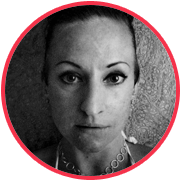
Justyna’s project is a study of the present-day Ukraine and the Dnieper river as a metaphor of the chasm in the country’s unity. It is an attempt to ask questions about how mixed ethnic and historical heritage arrived in today’s reality. Throughout 2014 the photographer made six trips to the Ukraine and talked to people living along the central part of the Dnieper and in bigger cities where present-day reality is being forged. She questioned people about what it means to be a Ukrainian, whether they treat the river as a border line or as the country’s main artery and, among other things, why there is a war going on in the East.
{ “img”: “/wp-content/uploads/2015/04/pole_01.jpg”, “alt”: “Justyna Mielnikiewicz 1” },
{ “img”: “/wp-content/uploads/2015/04/pole_02.jpg”, “alt”: “Justyna Mielnikiewicz 2” },
{ “img”: “/wp-content/uploads/2015/04/pole_03.jpg”, “alt”: “Justyna Mielnikiewicz 3” },
{ “img”: “/wp-content/uploads/2015/04/pole_04.jpg”, “alt”: “Justyna Mielnikiewicz 4” },
{ “img”: “/wp-content/uploads/2015/04/pole_05.jpg”, “alt”: “Justyna Mielnikiewicz 5” },
{ “img”: “/wp-content/uploads/2015/04/pole_06.jpg”, “alt”: “Justyna Mielnikiewicz 6” },
{ “img”: “/wp-content/uploads/2015/04/pole_07.jpg”, “alt”: “Justyna Mielnikiewicz 7” },
{ “img”: “/wp-content/uploads/2015/04/pole_08.jpg”, “alt”: “Justyna Mielnikiewicz 8” },
{ “img”: “/wp-content/uploads/2015/04/pole_09.jpg”, “alt”: “Justyna Mielnikiewicz 9” },
{ “img”: “/wp-content/uploads/2015/04/pole_10.jpg”, “alt”: “Justyna Mielnikiewicz 10” },
{ “img”: “/wp-content/uploads/2015/04/pole_11.jpg”, “alt”: “Justyna Mielnikiewicz 11” },
{ “img”: “/wp-content/uploads/2015/04/pole_12.jpg”, “alt”: “Justyna Mielnikiewicz 12” },
{ “img”: “/wp-content/uploads/2015/04/pole_13.jpg”, “alt”: “Justyna Mielnikiewicz 13” },
{ “img”: “/wp-content/uploads/2015/04/pole_14.jpg”, “alt”: “Justyna Mielnikiewicz 14” },
{ “img”: “/wp-content/uploads/2015/04/pole_15.jpg”, “alt”: “Justyna Mielnikiewicz 15” }

“Theatre of Life” is a very intimate project, it is a study of surrealism in everyday life. As a result of moving headlong into technological development and the media invasion a lot of people look like they have lost grip of reality. They look for ways of escaping it, and it is those ways that I am interested in. “I use Plato’s idea of Theatrum Mundi. Man is just a puppet, an actor performing in the theatre of life that is directed by an omnipotent being. Nowadays divine entities have been replaced by mass media. So by degrees people get confused on the borderline between the two worlds: the real one and the one created by the media.” Lazar observes.
{ “img”: “/wp-content/uploads/2015/04/pole_16.jpg”, “alt”: “Tomasz Lazar 1” },
{ “img”: “/wp-content/uploads/2015/04/pole_17.jpg”, “alt”: “Tomasz Lazar 2” },
{ “img”: “/wp-content/uploads/2015/04/pole_18.jpg”, “alt”: “Tomasz Lazar 3” },
{ “img”: “/wp-content/uploads/2015/04/pole_19.jpg”, “alt”: “Tomasz Lazar 4” },
{ “img”: “/wp-content/uploads/2015/04/pole_20.jpg”, “alt”: “Tomasz Lazar 5” },
{ “img”: “/wp-content/uploads/2015/04/pole_21.jpg”, “alt”: “Tomasz Lazar 6” },
{ “img”: “/wp-content/uploads/2015/04/pole_22.jpg”, “alt”: “Tomasz Lazar 7” },
{ “img”: “/wp-content/uploads/2015/04/pole_23.jpg”, “alt”: “Tomasz Lazar 8” },
{ “img”: “/wp-content/uploads/2015/04/pole_24.jpg”, “alt”: “Tomasz Lazar 8” },
{ “img”: “/wp-content/uploads/2015/04/pole_25.jpg”, “alt”: “Tomasz Lazar 8” },
{ “img”: “/wp-content/uploads/2015/04/pole_26.jpg”, “alt”: “Tomasz Lazar 8” },
{ “img”: “/wp-content/uploads/2015/04/pole_27.jpg”, “alt”: “Tomasz Lazar 9” }
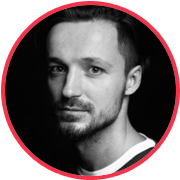
“The Black Sea of Concrete” series was completed in 2009. Milach realized soon after the Orange revolution that people had lost hope for a better life and got tired of political chaos. Once the photographer had a conversation with a 25 year old Alexander from Crimea who, as he was sipping on his beer, said, “Let Eastern Ukraine and the Crimea go back to Russia, and the western part join the European Union.” So now Milach is reconsidering his project, “I would never have imagined that Alexander’s scenario would become reality. I thought this story would be a kind of reminiscence from the past, with no relevance to the present.”
{ “img”: “/wp-content/uploads/2015/04/pole_28.jpg”, “alt”: “Rafal Milach 1” },
{ “img”: “/wp-content/uploads/2015/04/pole_29.jpg”, “alt”: “Rafal Milach 2” },
{ “img”: “/wp-content/uploads/2015/04/pole_30.jpg”, “alt”: “Rafal Milach 3” },
{ “img”: “/wp-content/uploads/2015/04/pole_31.jpg”, “alt”: “Rafal Milach 4” },
{ “img”: “/wp-content/uploads/2015/04/pole_32.jpg”, “alt”: “Rafal Milach 5” },
{ “img”: “/wp-content/uploads/2015/04/pole_33.jpg”, “alt”: “Rafal Milach 6” },
{ “img”: “/wp-content/uploads/2015/04/pole_34.jpg”, “alt”: “Rafal Milach 7” },
{ “img”: “/wp-content/uploads/2015/04/pole_35.jpg”, “alt”: “Rafal Milach 8” },
{ “img”: “/wp-content/uploads/2015/04/pole_36.jpg”, “alt”: “Rafal Milach 9” },
{ “img”: “/wp-content/uploads/2015/04/pole_37.jpg”, “alt”: “Rafal Milach 10” }
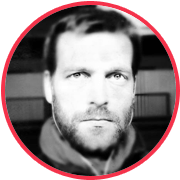
In 2009 Jan found himself in a Carpathian village in the Ukraine, in close proximity to the Polish border. He continued going there for three years and gradually got to know the locals, learned about their secluded lifestyle and close connection to the traditions of their ancestors. His photographic novel “Boiko” tells the tale of everyday life in a European village in the old days, but it is, in fact ,present-day life. In that far-away village Jan Brykczyński found the world he had known in his childhood bedtime tales — for him that village became a symbol of a harmonious bucolic existence.
{ “img”: “/wp-content/uploads/2015/04/pole_38.jpg”, “alt”: “Jan Brykczyński 1” },
{ “img”: “/wp-content/uploads/2015/04/pole_39.jpg”, “alt”: “Jan Brykczyński 2” },
{ “img”: “/wp-content/uploads/2015/04/pole_40.jpg”, “alt”: “Jan Brykczyński 3” },
{ “img”: “/wp-content/uploads/2015/04/pole_41.jpg”, “alt”: “Jan Brykczyński 4” },
{ “img”: “/wp-content/uploads/2015/04/pole_42.jpg”, “alt”: “Jan Brykczyński 5” },
{ “img”: “/wp-content/uploads/2015/04/pole_43.jpg”, “alt”: “Jan Brykczyński 6” },
{ “img”: “/wp-content/uploads/2015/04/pole_44.jpg”, “alt”: “Jan Brykczyński 7” },
{ “img”: “/wp-content/uploads/2015/04/pole_45.jpg”, “alt”: “Jan Brykczyński 8” },
{ “img”: “/wp-content/uploads/2015/04/pole_46.jpg”, “alt”: “Jan Brykczyński 9” },
{ “img”: “/wp-content/uploads/2015/04/pole_47.jpg”, “alt”: “Jan Brykczyński 10” }
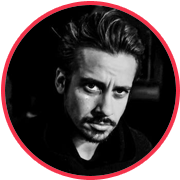
The “Whisperers” project is about people who believe that they have a gift from God — an ability to cure any ailments and appease physical pain. They claim to be able to do incantations and release people possessed by evil from its grip. For the bigger part it is older women who live in small villages in Podlasie area in Eastern Poland and Western Belarus. They consider themselves Orthodox christians, but the church won’t recognise them because of their healing practice. The Whisperers treat patients at their homes or in special sacred places and in most cases don’t take any money for the treatment, saying that it is their obligation to God to serve people in this way.
{ “img”: “/wp-content/uploads/2015/04/pole_48.jpg”, “alt”: “Kuba Kaminski 1”, “text”: “A woman walks through the woods near a small village of Czeremcha just a few meters from the Belarussian border and gives me directions to The Whisperer’s house nearby.”},
{ “img”: “/wp-content/uploads/2015/04/pole_49.jpg”, “alt”: “Kuba Kaminski 2”, “text”: “According to a legend, more than one hundred years ago the Mother of God appeared at this very place called Buszmicze, a few kilometers from the Polish border in Western Belarus in the middle of nowhere. Since then, people have been putting up crosses and built a small chapel.” },
{ “img”: “/wp-content/uploads/2015/04/pole_50.jpg”, “alt”: “Kuba Kaminski 3”, “text”: “Whisperer Anna from Rutka village puts a young man into a trance by a prayer where he sees Jesus Christ sharing bread at a table in Heaven. It’s not his first visit to Anna’s house. He believes The Whisperer restored his ability to speak. He had been mute since birth.” },
{ “img”: “/wp-content/uploads/2015/04/pole_51.jpg”, “alt”: “Kuba Kaminski 4”, “text”: “People praying during the celebration of Epiphany in a small village of Dubicze Cerkiewne are reflected in the water consecrated by an orthodox priest in the Jordan ritual.” },
{ “img”: “/wp-content/uploads/2015/04/pole_52.jpg”, “alt”: “Kuba Kaminski 5”, “text”: “Small river called Siporka flows from Opaka village in Poland to a village also called Opaka on the other side of the border with Belarus.” },
{ “img”: “/wp-content/uploads/2015/04/pole_53.jpg”, “alt”: “Kuba Kaminski 6”, “text”: “Whisperer Anna performs a healing beside the holy water source in Dobrywoda village.” },
{ “img”: “/wp-content/uploads/2015/04/pole_54.jpg”, “alt”: “Kuba Kaminski 7”, “text”: “Whisperer Olga’s husband, also a Whisperer in the small Opaka village a few hundred meters from the Belarussian border. If Olga’s prayers won’t work I can even pray to The Fallen Angel himself if you want me to, he said.” },
{ “img”: “/wp-content/uploads/2015/04/pole_55.jpg”, “alt”: “Kuba Kaminski 8”, “text”: “Whisperer Olga says her special prayer in her cabin where she meets people coming to her from all over Poland and Belarus with all kinds of needs.” },
{ “img”: “/wp-content/uploads/2015/04/pole_56.jpg”, “alt”: “Kuba Kaminski 9”, “text”: “Whisperer Artemiuk performing a soul healing in her house in Parcew village.” },
{ “img”: “/wp-content/uploads/2015/04/pole_57.jpg”, “alt”: “Kuba Kaminski 10”, “text”: “Whisperer Olga performs a healing by stepping over her patient as she goes outside, taking all the bad spirits with her.” },
{ “img”: “/wp-content/uploads/2015/04/pole_58.jpg”, “alt”: “Kuba Kaminski 11”, “text”: “Two small boys carolling from house to house in the village of Uzowo in western Belarus during the orthodox New Year’s Eve.” }
New and best




